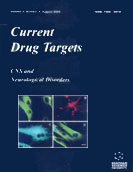Abstract
With the exception of obsessive compulsive disorder, benzodiazepines (BZs) remain a major first line treatment for anxiety disorders. However, as well as being anxiolytic, BZs also cause sedation acutely, related to the fact that BZs are also used as hypnotics, and chronically may have abuse potential as well as cause physical dependence which manifests itself as the demonstration of a number of adverse events upon discontinuation. The molecular mechanisms of BZs are now well defined in that they enhance the actions of the inhibitory neurotransmitter GABA by binding to a specific recognition site on GABAA receptors containing α1, α2, α3 and α5 subunits. Compounds that bind at this modulatory site and enhance the inhibitory actions of GABA are classified as agonists, those that decrease the actions of GABA are termed inverse agonists whereas compounds which bind but have no effect on GABA inhibition are termed antagonists. The clinically used BZs are full agonists and between the opposite ends of the spectrum, i.e. full agonist and full inverse agonist, are a range of compounds with differing degrees of efficacy, such as partial agonists and partial inverse agonists. Attempts have been made to develop compounds which are anxioselective in that they retain the anxiolytic properties of the full agonist BZs but have reduced sedation and dependence (withdrawal) liabilities. Such compounds may interact with all four (i.e. α1-, α2-, α3- and α5-containing) GABAA receptor subtypes and have partial rather than full agonist efficacies. Examples of nonselective partial agonists include bretazenil, imidazenil, FG 8205, abecarnil, NS 2710, pagoclone, RWJ-51204 and (S)-desmethylzopiclone. Alternatively, a compound might have comparable binding affinity but different efficacies at the various subtypes, thereby preferentially exerting its effects at subtypes thought to be associated with anxiety (α2- and / or α3-containing receptors) rather than the subtype associated with sedation (α1-containing receptors). Examples of efficacy selective compounds include L-838417, NGD 91-3 and SL651498. For each compound, preclinical and where available clinical data will be reviewed. Emerging themes include the lack of definitive intrinsic efficacy data for certain compounds (e.g. abecarnil, ocinaplon, pagoclone) and the difficulty in translating robust anxiolysis and a separation between anxiolytic and sedative doses of non-selective partial agonists in preclinical species into consistent clinical benefit in man (e.g. bretazenil, abecarnil, pagoclone). With respect to efficacy selective compounds, NGD 91-3 was not anxiolytic in man but in the absence of efficacy data, these results are difficult to interpret. Nevertheless, efficacy selective compounds represent a novel approach to targeting specific subtypes of the GABAA receptor, the ultimate test of which will be evaluation in the clinic.
Keywords: anxiety, generalised anxiety disorder, benzodiazepine, gabaa receptor, subtype-selective, bretazenil, imidazenil, abecarnil, pagoclone, rwj-51204
 10
10

















